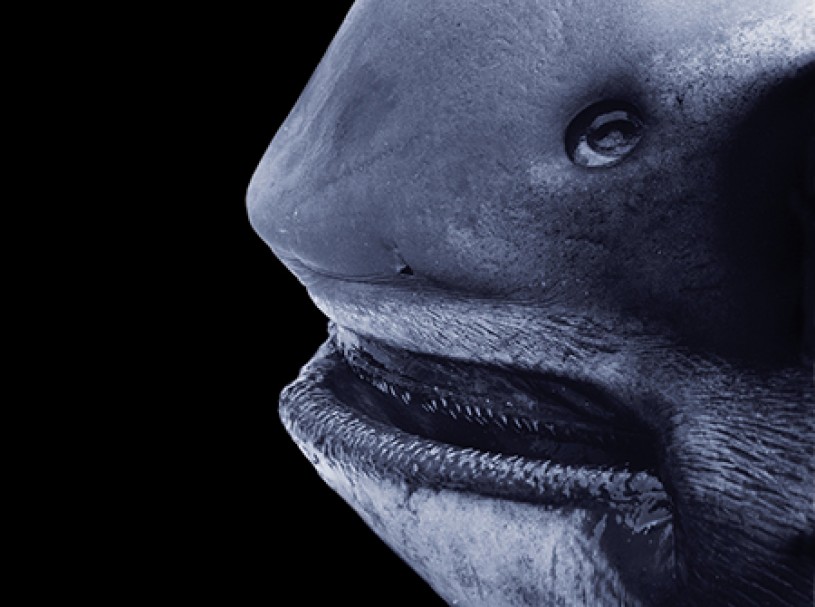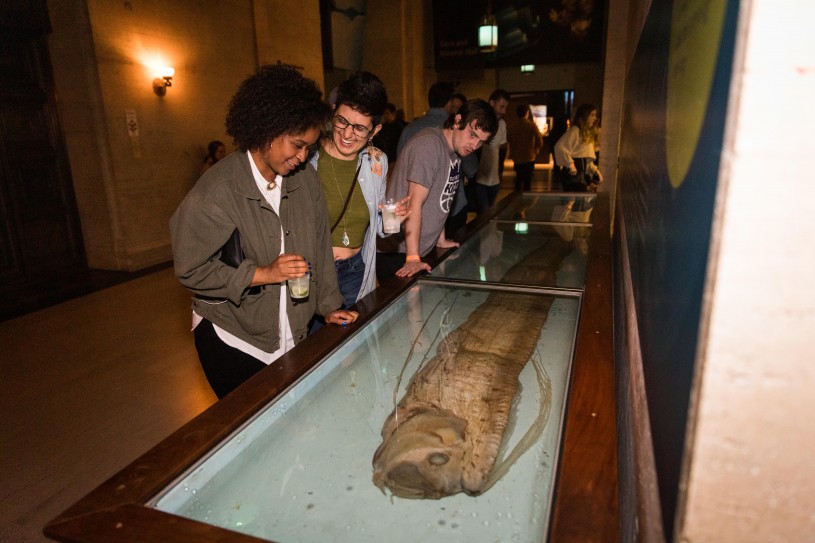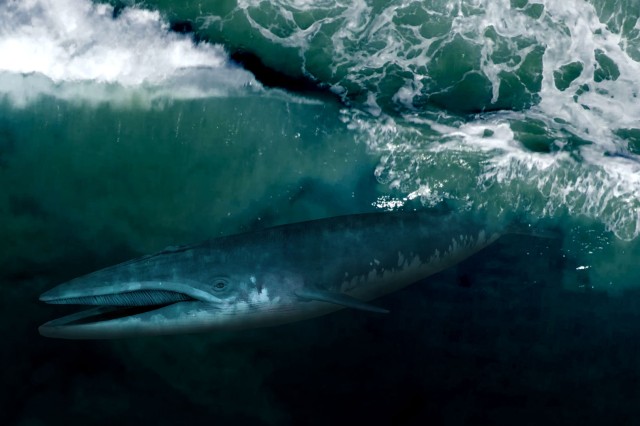See some of our amazing specimens on display at the Museum!
Megamouth Shark and Coelacanth
Two remarkable specimens, a megamouth shark (Megachasma pelagios) and a coelacanth (Latimeria chalumnae) share a large exhibit tank displayed on the first floor. The shark is the second megamouth specimen ever recorded and was caught in 1984 off Catalina Island. Megamouth sharks inhabit all oceans but are rarely captured. They inhabit deep waters (to 500 ft. deep) during the daytime and rise to near the surface at night. The coelacanth is a representative of the Sarcopterygii, or lobe-finned fishes, close relatives of the tetrapods (amphibians, reptiles, birds, and mammals). Thought to have gone extinct in the Cretaceous, coelacanths were rediscovered living in the Indian Ocean in 1938. They are two of our largest specimens (along with the oarfish) and they are both males.
Catalina Island Oarfish
Also on display on the first floor is a long, slender fish with distinctively elongate dorsal and pectoral fin rays. This silvery ribbon-like fish swam into Big Fisherman Cove on Catalina Island in 2006. It was identified as an oarfish (Regalecus glesne) by researchers from the Wrigley Marine Science Center located in the Cove, who were able to dive with and photograph the fish as it swam. They collected it, froze it, and brought the fish by boat to the mainland where it was transported to the Natural History Museum and prepared for display. The vibrant purple, blue, and red colors of the living specimen are shown in an illustration adjacent to the specimen, and some of the live colors are still visible. Oarfishes in the water may be mistaken for sea monsters or sea serpents, and are likely the source of many such stories.


